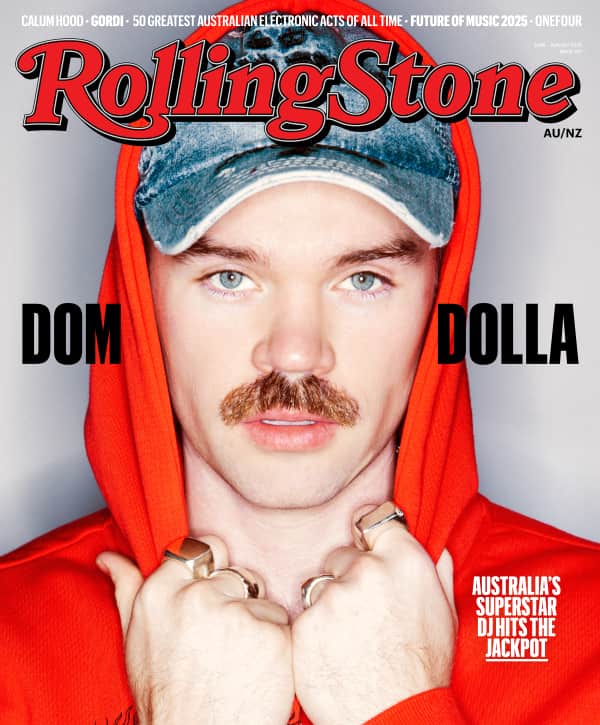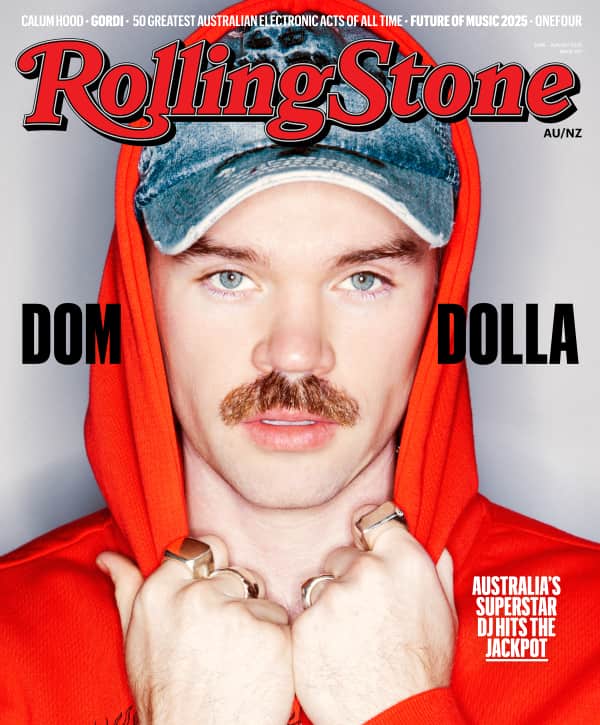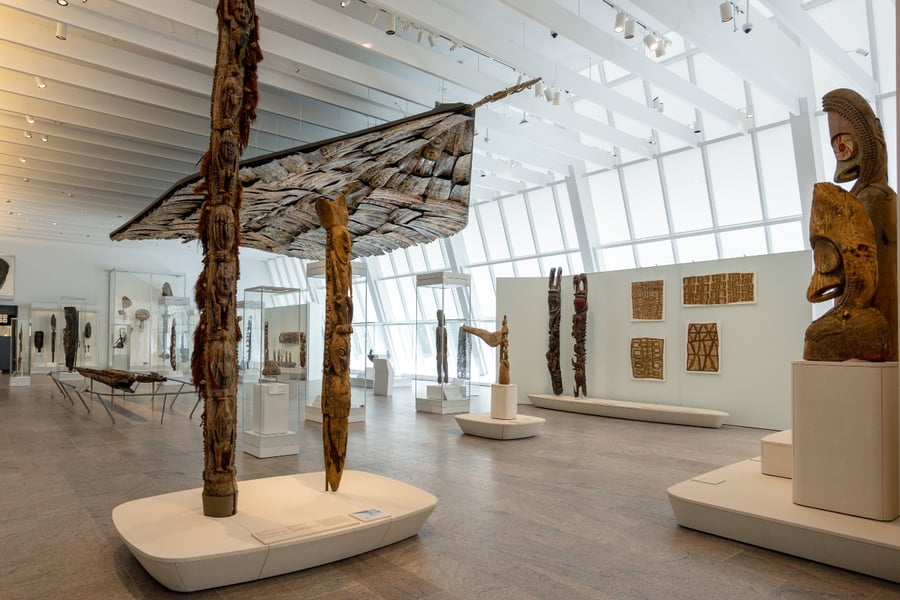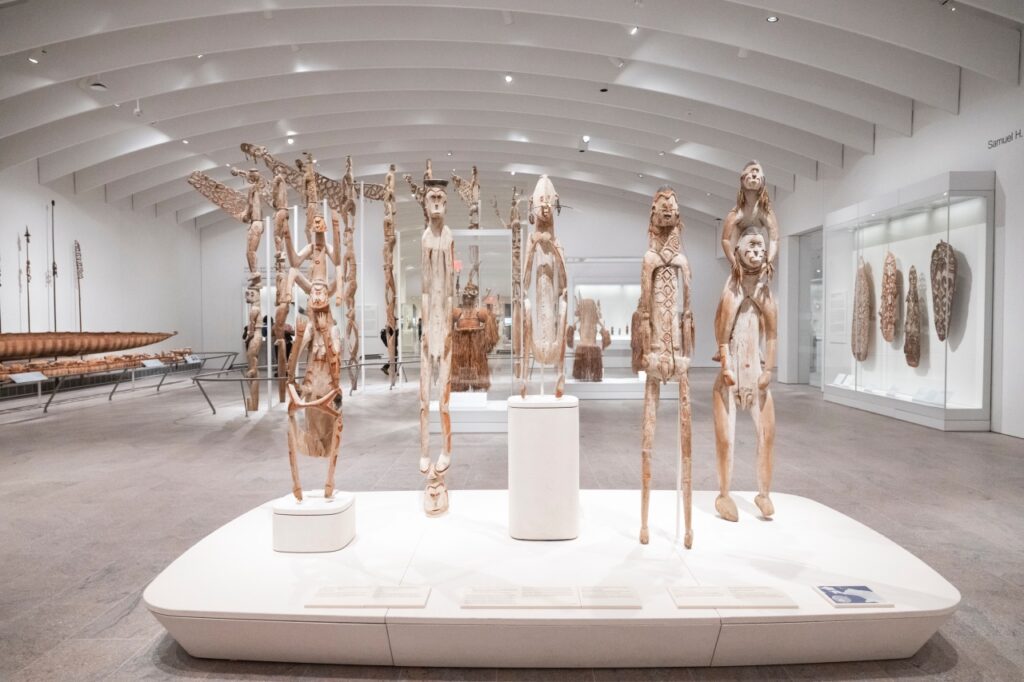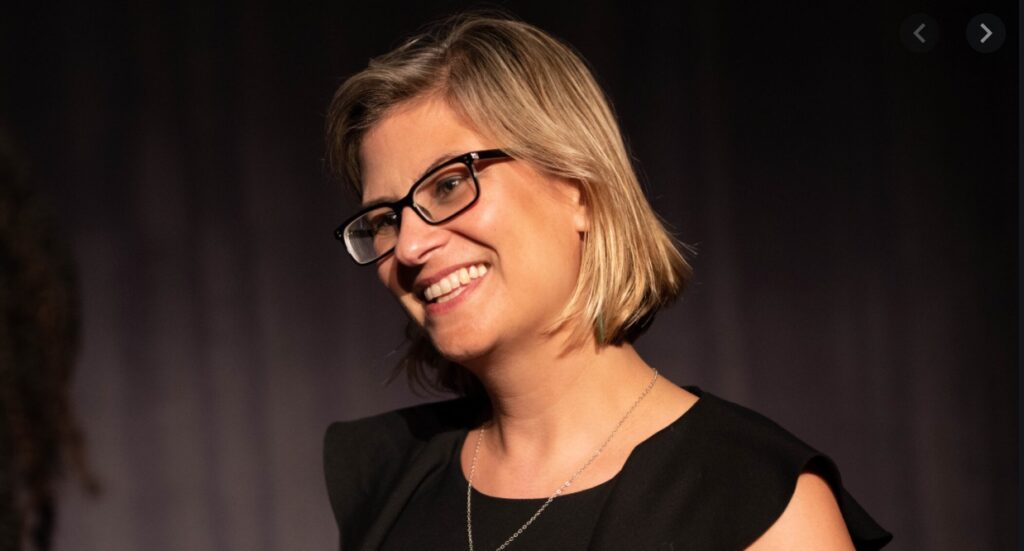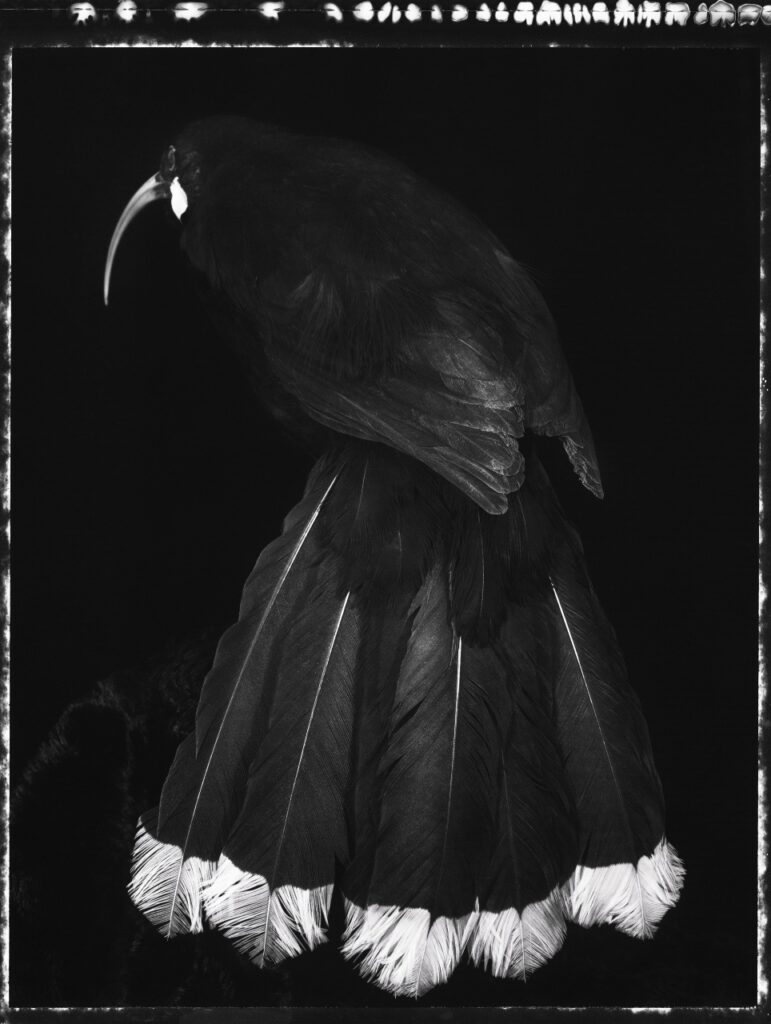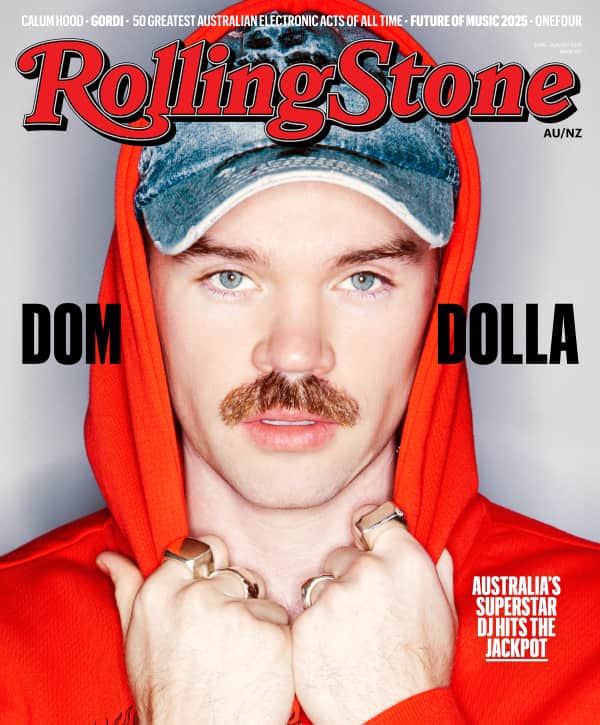In a dawn ceremony 40 years ago, a group of gallery staff, Māori elders, and art aficionados gathered outside New York City’s prestigious Metropolitan Museum of Art on Fifth Avenue.
Drawing the attention of curious passersby, a powerful display of Māori customs acknowledged the significance of the “Te Māori” exhibition from Aotearoa being introduced to the art museum’s vast array of collections.
With kaumātua’s traveling 15,000km to Manhattan for the occasion, the early-morning traditional Māori welcome on September 10th, 1984 was, by many accounts, unforgettable.
“People still talk about it today,” Maia Nuku (Ngāi Tai), the museum’s curator of the Arts of Oceania galleries, tells Rolling Stone AU/NZ over four decades later. “They stopped the traffic on Fifth Avenue.”
The appreciation of the Māori taonga was contagious, triggering a similarly rapturous response when the exhibition returned home in 1986. The collaboration between the Met and Māori guardians was hailed as an example of establishing relationships between Indigenous groups and museum curators because, as Nuku notes, “essentially Māori led the way.”
“They were able to decide what works would travel. They were very much in charge of their own representation. It’s always held up as this moment that shifted the dynamics between museums and Indigenous communities. Māori established that, and it’s still having repercussions across the Pacific,” she continues.
Forty years on, to acknowledge the reopening of the Arts of Oceania galleries, a similar ceremony was held outside the Met earlier this year.
Love Music?
Get your daily dose of everything happening in Australian/New Zealand music and globally.
A dawn ceremony included representatives from the 140 cultures whose work is embraced in the reimagined Michael C. Rockefeller wing, which was widely renovated since its temporary closure in 2021.
“I think it’s so exciting to be able to showcase these artworks in galleries at the Met, because you’ve got six million visitors walking through these spaces and you have a chance to really centre the cultural ways of being in the Pacific on an international platform, rather than it being this distant, exotic place that’s seen as being on the periphery,” Nuku says.
Artwork has been collected to harness Indigenous perspectives, history, and storytelling from across the Pacific, including Australia and New Zealand.
The pieces, Nuku says, celebrate the dynamic dialogue between contemporary art and historic works. Being involved in bringing the exhibition to life has given her the opportunity to pay homage to her own Māori heritage as the Met’s first Indigenous curator.
While Nuku’s English accent betrays her links to London, where she was born and subsequently brought up, she speaks with enthusiasm of being able to draw on her Māori lineage for that section of the gallery.
“I think we’ve got a lot to say about resilience and caring for the planet and not seeing ourselves as owning land but as guardians, kaitiaki as Māori would say — stewards of the land for our generation,” she explains.
“You’re pulling in these parts of the world, these art traditions and the priorities of artists working in places like the Pacific, which is like a kaleidoscope of cultures across this vast region of the world that takes up almost a third of the globe,” she says.
“I think it’s very exciting because we have these incredible contemporary artists who are often mining the resource[s] of the museum to make sense of how people navigate literally in the Pacific today, in terms of life and spiritual wellbeing and stewardship of the ocean and the land and all this incredible Indigenous art, and making it relevant for people.”
The initial collection was gifted to the museum when it first opened in 1982 by Nelson Rockefeller, the 41st vice president of the US who served from 1974 to 1977. The wing is named after his son who vanished during an expedition to the Asmat region of southwestern Dutch New Guinea — now included in the Indonesian province of South Papua.
The pieces today bring the collection up to speed, reflecting the admirable work going on in museums in New Zealand and Australia as well as the archipelagos of Oceania.
Nuku designed the layout in a way to naturally guide guests along a diagonal axis from one group to another as the ocean flows, encouraging a journey through the pieces that requires no thinking as to what direction guests are pulled into next.
“The ocean is that highway that Epeli Hau’ofa speaks of,” she explains. “He’s the Tongan activist and scholar and poet who really reframed Oceania and the thinking of it from a Pacific Islander perspective — not as this sea of islands, but as the ocean being that connective tissue that actually is a highway and links everyone across space and time in the Pacific.”
Nuku describes her multi-disciplinary space in academia as a fusion of art history, anthropology, archaeology, and contemporary art to make it relevant for the 21st century, which has led her to complete more than 12 years of studying.
Her role requires her own analysis, connecting to the works in a way that can then transfer that knowledge into making it digestible for others.
“You’re trying to pull back history which has been very eclipsed because these are not art traditions that have been front and centre in the canon of art, which is often focused on Europe and America,” she says. “I did want to create a space where one was able to create these ideas about connectivity and relationships. Obviously, relationships and reciprocal relations are so key in the Pacific.”
Within the Arts of Oceania space sits a 48-foot long Asmat canoe made from a single hollowed trunk. It’s a form of spiritual vessel of Papua New Guinea capable of carrying 20 people, intricately tied to ancestral practices and their connection with the spirit world, as well as stunning carved figures and masks, upright bis poles used to honour the dead, and an array of sprawling textiles.
Among the installations is the breathtaking Kwoma Ceiling, the largest contemporary art installation in the Met, commissioned by the museum in 1970, which features more than 100 individually painted panels that mimic the interior of a ceremonial house reserved for men within the Cuomo village in the Sepik River region of Papua New Guinea.
“It’s like looking at an index or a map of all the cosmological relationships between individuals in the village who have the customary rights to reproduce specific motifs,” Nuku explains.
“There are crocodiles expressed in the motifs, but there’s also one which are the eyes of the crocodile, so you see these pairs of eyes down the centre of another panel, which are the eyes out on the water at night. They’ll take one speck of a motif and then repeat it, so they’re really mnemonics for storytelling, for oral histories.”
View this post on Instagram
The section recognising Aotearoa features a traditional mere pounamu (greenstone hand club), a kapeu (curved ear ornament), a kuru (pendant), and delicate wakahuia (treasure boxes).
An epa (carved panel) from a chief’s pātaka (storehouse used for the safekeeping of food or valuables) stands tall among the collection, while the designs across two freestanding tekoteko (gable figures) ignite thoughts of how they may have once sat at the top of a ceremonial house in a Māori village.
While the display is modest in size, it offers a powerful glimpse into the beautiful cultural expressions of Aotearoa’s Indigenous people.
“Obviously the Māori installations were a personal favourite,” Nuku admits. “The actual collection that we have at the Met is actually not a huge one. So that’s the other piece of this, the collection was really made as an art collection… Most of what is out there are the real highlights in our collection.
“We’ve actually got a pair of really phenomenal photographs by [New Zealand artist] Fiona Pardington. We’re showing the first one now, ‘Solitary Female Huia’.” Pardington is renowned for her photography work which highlights cultural emblems within New Zealand’s museums, including taxidermied native birds.
“[‘Solitary Female Huia’] is a portrait of a bird that’s now extinct. She’s trying to recover the aura and honour and acknowledge their status in a sense of these birds that are no longer with us, but she wants to acknowledge their importance and so that was important to me to connect what I was showing in the case with contemporary practice,” Nuku explains.
“I want to be representative of a wide range of practices across Aotearoa, so obviously I want to acquire works from different parts of the country — that’s the challenge and an opportunity really, because there’s lots of great weaving work. There are weavers who were making poi with tariko and lots of amazing kete, and then there’ll be more cloaks.”
All of the works within Oceania were completed over the last 500 years by descendants of voyagers who arrived on the shores 3,500-5,000 years earlier, honouring their plight, valuing their importance, and recognising their significance.
It’s been Nuku’s privilege to have been able to create a space that shines a light on such special work and all it represents.
“You want to have visitors stop in their tracks and see this incredible work of art,” she says. “I want people to be wowed by something. I want them to reach for it — why is it made of pearl shell? Why has it got that design on it? What’s the aesthetic that’s driving this? None of it is non-intentional. Everything is there for a reason.
“I think you want to have people be excited and find these things really dynamic and intriguing, which is in a way how I found them.”
Find out more about the Arts of Oceania galleries here.































